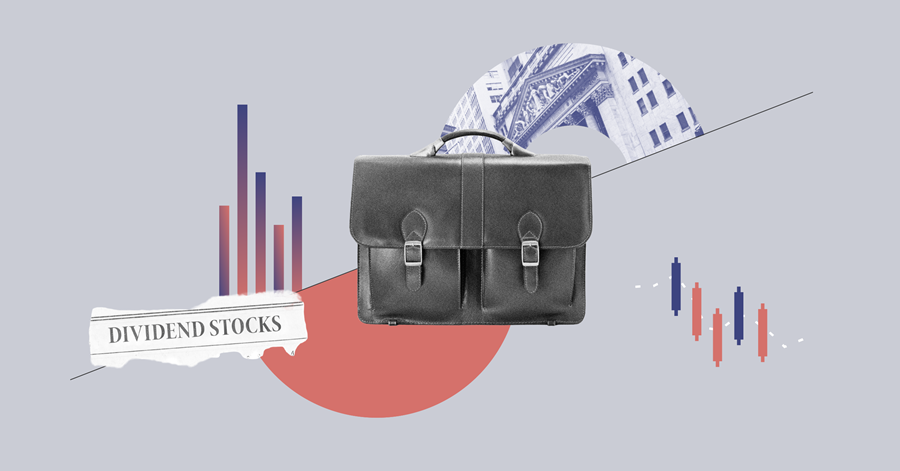
In these turbulent times, investors face significant challenges, especially those nearing retirement and diligently saving for it. A slew of disruptive global macroeconomic events - from the ongoing Ukraine-Russia war to the Israel-Hamas war in the Middle East and from trade disruptions to a wobbly global economic growth - have been adversely affecting various sectors of the global economy, as well as retirement portfolios.
Given the current landscape, individuals approaching retirement age may find it prudent to explore sectors that have the potential to perform well irrespective of economic conditions. For Canadian investors, sectors such as financials, utilities and some pockets of energy have shown resilience during recent global crises.
The following stocks from these sectors could add a ring of security to RRSPs, particularly during periods of geopolitical upheavals when retirement portfolios need downside protection.
Canadian utility major Fortis FTS serves more than 3.4 million electricity and gas customers in Canada and the United States. The company also has smaller stakes in electricity generation and several Caribbean utilities. Its subsidiary ITC operates electric transmission in seven U.S. states.
Fortis' main regulated Canadian operations are in British Columbia, Alberta, and Newfoundland. “These relatively low-risk operations result in stable earnings and help fund consistent dividend growth,” says a Morningstar equity report, but adds that returns on the Canadian side are lower “because of a lower cost of capital from a lower equity component compared with its U.S. counterparts.”
Fortis has been ramping up its U.S. footprint through acquisitions, including its prized asset ITC Holdings. ITC affords “Fortis an opportunity to benefit from a long runway of U.S. transmission investment opportunities from aging infrastructure to supporting renewable energy growth,” says Morningstar strategist Andrew Bischof, who puts the stock’s fair value at $58.
The utility’s management has pursued numerous capital investment growth opportunities, which Bischof says should support more than 6% annual rate base growth over the next five years.
“We assume consistent regulatory treatment at the Canadian and U.S. utilities,” he says, and forecasts over $24 billion of total capital investment at the regulated gas and electric utilities through 2027.
The firm’s earnings growth estimate, he adds, are predicated on “continued customer growth and execution of Fortis' capital investment program.
Canadian energy behemoth Enbridge ENB owns extensive midstream assets that transport hydrocarbons across the U.S. and Canada. Its pipeline network comprises the Canadian Mainline system, regional oil sands pipelines, and natural gas pipelines. The company also has a small renewables portfolio primarily concentrated on onshore and offshore wind projects.
“Enbridge stands out among North American midstream operators with a utility-like earnings profile,” says a Morningstar equity report.
The energy major’s most important asset, the Mainline system, controls over 70% of Canada's takeaway capacity. It’s also linked to highly complex U.S. refineries that value heavy oil, which keeps demand steady in the near to medium term despite a higher U.S. light oil output, the report adds.
Both investors and the management team highly value Enbridge's dividend. The company has been paying dividends to its shareholders for over 69 years. Over the past 29 years, the dividend has grown at an average compound annual growth rate of 10%.
In November 2023, Enbridge announced a 3.1% increase to its dividend. However, growth is expected to be about 3% annually for the foreseeable future, says Morningstar equity analyst Stephen Ellis, who pegs the stock’s fair value at $52, and forecasts a 7% annual average EBITDA growth over the next five years.
Among Enbridge’s operations, the liquids pipelines business and utility assets are narrow-moat business, while gas transmissions business boasts a wide moat, built on quality and irreplaceable nature of the assets, Ellis notes.
Canadian banking behemoth, Toronto-Dominion TD operates three business segments: Canadian retail banking, U.S. retail banking, and wholesale banking. In the U.S., the bank’s operations span from Maine to Florida, with a strong presence in the Northeast. It also has a 13% ownership stake in asset manager Charles Schwab.
“Toronto-Dominion is one of the two largest banks in Canada by assets and one of six that collectively hold roughly 90% of the nation's banking deposits,” says a Morningstar equity report.
Canada accounts for 55% of the bank’s revenue and 35% is derived from the U.S., while the rest comes from other countries.
“Toronto-Dominion has done an admirable job of focusing on its Canadian retail operations and growing into number-one or -two market share for most key products in this segment,” notes Morningstar equity analyst Michael Miller, who puts the stock’s fair value at $92.
TD has also established a significant presence south of the border where it has the most branches among Canadian banks as well as a 12% ownership stake in Charles Schwab.
The Canadian lender boasts the number-two market share for business banking in Canada. “With over $400 billion in Canadian assets under management and top-three dealer status in Canada, and being the number-one card issuer in Canada, Toronto-Dominion should remain one of the dominant Canadian banks for years to come,” assures Miller, who assigns a wide moat to the business, underpinned primarily by cost advantages and switching costs.







:quality(80)/cloudfront-us-east-1.images.arcpublishing.com/morningstar/2RGHQJTF4ZEURNSAGBY7CSHCUQ.jpg)













